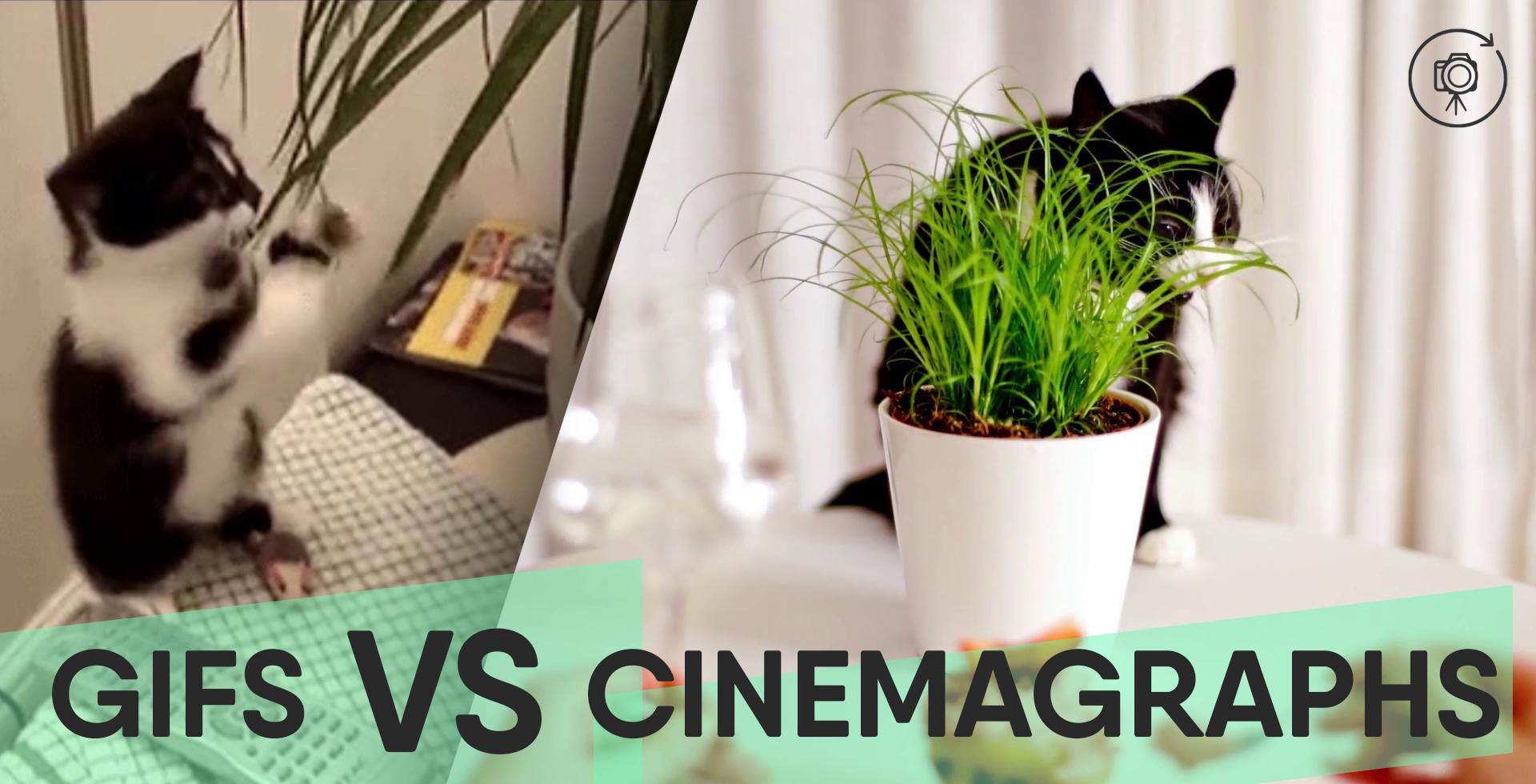Question Corner: What’s the Difference Between a Cinemagraph and an Animated GIF?
In this section of the blog we’ll tackle frequently asked questions, myths and misconceptions about cinemagraphs! To kick things off, here’s one we hear all the time: “So they’re basically fancy animated GIFs?”
When my best friend describes my job to other people, she tells them I work for a company that “does something with creating and selling animated GIFs, but fancy, like way fancier.” The moment I caught wind of her saying this, I had to stop and correct her, “Poco, they’re not animated GIFs, they’re cinemagraphs!” Her bewildered look made clear to me the importance of defining cinemagraphs and more specifically, clarifying the difference between these living photos and animated GIFs.
1. Image Quality
A successful cinemagraph is akin to a captivating photograph. In other words, the qualities that define excellent photography also apply to cinemagraphs: composition, sharpness, artistic eye, to name a few. Cinemagraphs do not compromise on quality. Thanks to the evolution of web video and video compression techniques, cinemagraphs can be embedded in websites and on social media platforms as high-definition videos. All of the living photos featured in the gallereplay collection for instance are available as video files in Full HD.
Animated GIFs are less concerned with image quality and artistic content; they rely more heavily on humor and evoking a comical reaction. They also tend to be shared in the Graphics Interchange Format (hence the name), which was invented in the late 1980’s. This somewhat antiquated file format has a color palette limited to 256 colors (compared to the 16 million colors offered by “true color” 24-bit video) and suffers from enormous filesizes at higher resolutions. In other words: animated GIFs tend to be lower in image quality and larger in file size than their HD cinemagraph counterparts.
(Source: reddit.com/giphy.com)
2. Looping
A well-executed cinemagraph maintains continuity in such a way that it does not feel like it is a short sequence on repeat. Their subtle, isolated movements are actually believable in their endlessness: blinking eyes, smoke and steam rising, rippling water, swaying leaves, flashing lights. The best cinemagraphs are those that go on forever without the edit ever becoming visible to the naked eye.
Animated GIFs generally do not aim to create the illusion of an “infinite moment.” They tend to have hard cuts and edits that are clearly visible and can irritate or distract viewers. Animated GIFs therefore lack the elegance of cinemagraphs.
(Source: wifflegif.com/giphy.com)
3. Motion
Thirdly: cinemagraphs generally play with the concepts of motion and time. They are “living photos” that combine moving and static elements in the same frame, creating an eye-catching and elegant effect, which often stimulates an emotional response of surprise and astonishment in the viewer.
GIFs don’t usually have a “frozen” or static element – they are in fact a portion of a video, animation or illustration on loop. They tend to contain more movement and have a more frantic feel to them.
(Source: kawaiilal.tumblr.com/giphy.com)
The Journey from GIF to High-Definition
Over the past years, the shift towards high-quality imagery and web video is undeniable. This evolution is summed up nicely by Jamie Beck and Kevin Burg of Ann Street Studio – the pioneers of the cinemagraph medium – on their blog: “Cinemagraphs began humbly. At first, using simple GIFs, we were limited by a file format spec’d in 1989, only a few months before Taylor Swift was born. Now in 2015 we can display them in so many better ways, most notably on mobile apps like Instagram and Facebook.”
“At first, using GIFs, we were limited by a file format spec’d in 1989…now we can display them in so many better ways.”
-Ann Street Studio
Indeed: when considering the characteristics of motion, image quality, and looping, the difference between GIFs and cinemagraphs is abundantly clear. Having quickly become a pop-culture sensation, animated GIFs are a trend that dates back over two decades, and certainly retains the quality of graphics from then. Cinemagraphs, however, are timeless. In maintaining quality and aesthetics, cinemagraphs are truly representative of the way technology is evolving towards the next wave of visual media.
Looking for more useful information about cinemagraphs? Subscribe to our newsletter at the top of the blog overview page for a monthly “Best of Blog” and a free cinemagraph.

